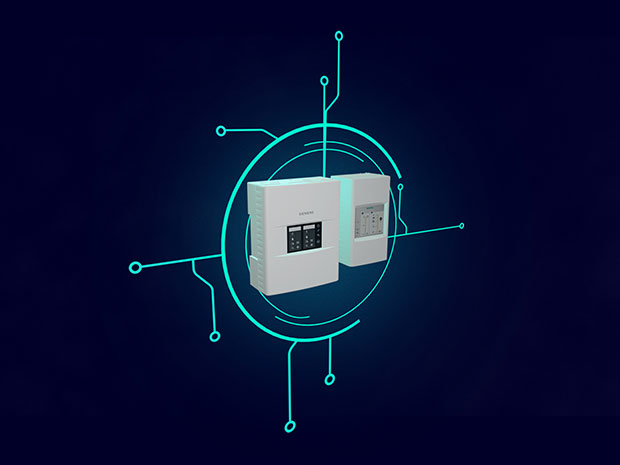Warehouses offer their own particular challenges in terms of fire safety. One of the main issues in high bay warehouses, with their elevated roofs and large open spaces, is that conventional ceiling-mounted point detectors can be rendered ineffective due to ‘stratification’. This is the term used when the smoke plume generated by a fire cools as it rises, often resulting in it having insufficient thermal buoyancy to reach the roof in sufficient quantities to activate detectors. The proliferation of mega-warehouses to service the ever-increasing desire for online shopping has brought this issue into even sharper focus.
 Beam detectors are sometimes therefore used as an alternative but they are inherently low in sensitivity and also prone to false alarms caused by building movement, airborne activity and high-level operation of equipment such as cranes or forklifts interrupting the beams.
Beam detectors are sometimes therefore used as an alternative but they are inherently low in sensitivity and also prone to false alarms caused by building movement, airborne activity and high-level operation of equipment such as cranes or forklifts interrupting the beams.
Aspirating smoke detection (ASD) offers active air sampling in large open spaces, overcoming the issue of smoke dilution and stratification, as well as being unhindered by potential interruption of a beam given that strategically positioned pipework carries the sampled air to the detector. In addition, such systems are ultra-sensitive, quiet and unobtrusive, ensuring they are an increasingly viable and effective alternative to standard point or beam detection, leading to their widespread adoption across warehouse applications.
ASD+
Siemens has offered ASD systems for a number of years but has now introduced a new generation which provides further benefits. Siemens ASD+ features two new detectors – FDA261 and FDA262 – which are specifically designed to provide solutions for larger and more complex projects, including e-commerce warehouses. A single device can cover an impressive area of up to 6,700 m2 – currently the largest coverage area available on the market. Even for Class A installations with the highest sensitivity requirements, up to 2,000 m2 of detection coverage is feasible with a single ASD+ detector.
The modular design of ASD+ enables easy replacement of both the detection chamber and the aspirator, all without the need to exchange the entire detector unit. This not only extends the product’s lifetime but also reduces its environmental footprint.
Easy commissioning and maintenance
The new ASD+ app ensures fast and easy digital commissioning in a process which is highly automated and intuitive through a QR-code based approach, reducing commissioning costs by up to 20%. The detection performance of the previous detectors has been enhanced in ASD+ through optics designed for high sensitivity, with optimisation to perform in harsh dirty environments through improved signal processing which differentiates between smoke and dust. This can be a significant advantage in some warehouse applications, effectively eliminating the risk of false alarms.
Maintenance is, of course, vital for any detection system to carry on operating in optimum condition. In the case of conventional point detectors, the high number of devices covering an area or the accessibility of their positioning can create practical difficulties. The capability to position the detection chambers of ASD away from the protected area means that access is often much easier. This is particularly true of the high ceilings which typically characterise warehouses, but under floor voids, escalators and other inaccessible areas can also benefit from the easier maintenance of aspirating systems. With Siemens ASD+ data can be provided from the cloud to ensure effective maintenance, with pre-alarm, dust detection or contamination level data all readily available.
If adding the detectors to an existing Siemens ASD solution, there are no additional hardware costs as ASD+ has been designed to integrate directly on Siemens Fdnet/Cnet loops, without the cost of an additional I/O card.
The ASD+ detectors offer adjustable alarm thresholds, providing the flexibility to meet the specific requirements of any application. Future-proofing is built in with the provision of extension slots to enable any upgrades, should they be required.




Comments are closed.